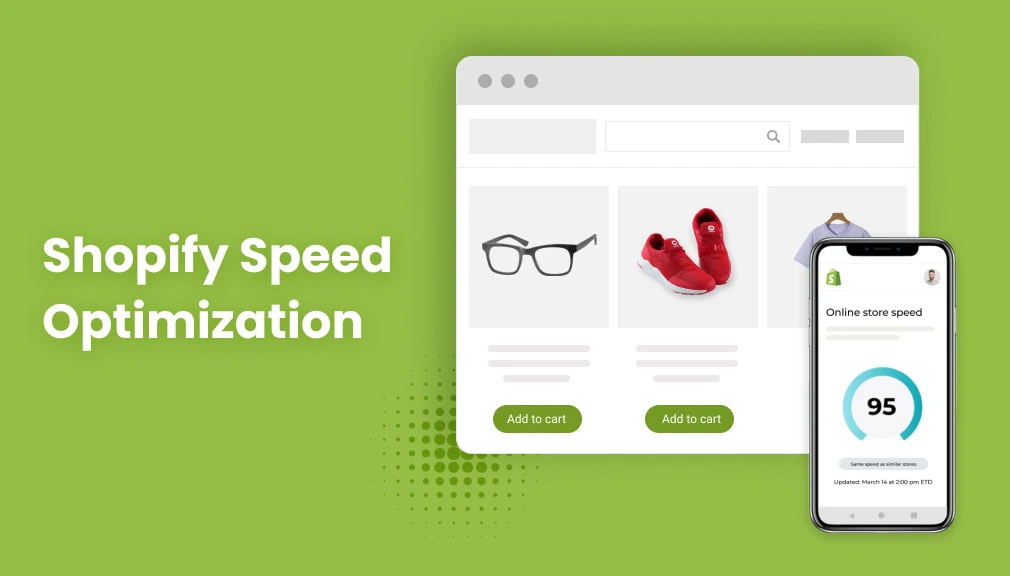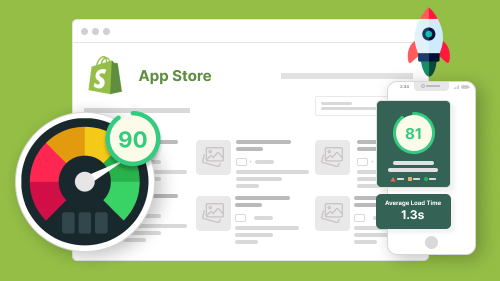Table of Contents
In the world of eCommerce, speed is money. A slow-loading Shopify store doesn’t just frustrate visitors—it directly affects your sales, search engine rankings, and overall brand image. Research shows that every second of delay can reduce conversion rates by 7%, meaning a sluggish store could be costing you thousands in lost revenue. This guide will walk you through practical, proven Shopify speed optimization strategies that will boost performance, improve user experience, and drive more sales. Whether you’re running a small boutique or a large online brand, speed optimization is a must for long-term success.

Why Shopify Store Speed Matters
1. Better User Experience (UX)
Customers expect instant gratification. When your store loads fast, shoppers can browse products smoothly without frustration, making them more likely to complete a purchase.
2. Improved Search Engine Rankings
Google’s Core Web Vitals now directly influence SEO rankings. Speed is one of the most critical ranking factors, so optimizing it can help your store appear higher in search results.
3. Increased Conversions & Sales
Faster stores convert better. A 0.1-second improvement in mobile load time can increase conversion rates by up to 8%, according to Google research.
4. Reduced Bounce Rate
If your store takes more than 3 seconds to load, over 40% of visitors will leave. Faster pages keep potential customers engaged.
How to Check Your Shopify Store Speed
Before you can improve your store’s performance, you need to measure its current speed. Shopify offers a built-in Online Store Speed Report found in your dashboard, but you should also test with third-party tools:
- Google PageSpeed Insights – Provides detailed performance suggestions.
- GTmetrix – Gives a waterfall breakdown of your store’s loading sequence.
- Pingdom Tools – Simple load-time tracking.
- WebPageTest – Advanced performance insights.
Factors Affecting Shopify Store Speed
- Theme Complexity – Heavy, feature-packed themes can slow load times.
- App Overload – Too many third-party apps add unnecessary scripts.
- Unoptimized Images – Large, uncompressed images consume bandwidth.
- Poor Liquid Code – Inefficient coding slows rendering.
- External Scripts – Chatbots, analytics, and social media widgets can delay page loads.
- Lack of Content Delivery Network (CDN) Optimization – Serving content from far-off servers increases latency.

See also
- Top 10 Common SEO Mistakes New Website Owners Make
- How Search Engines Work: A Simple Guide for New Marketers
- On-Page vs. Off-Page SEO: What’s the Difference?
Step-by-Step Guide to Shopify Speed Optimization
Step 1: Choose a Lightweight Shopify Theme
Your theme sets the foundation for your store’s performance. Select a fast, mobile-optimized theme such as:
- Dawn (Shopify’s free, minimal theme)
- Turbo by Out of the Sandbox
- Impulse by Archetype Themes
Pro Tip: Avoid overly animated or bloated themes unless absolutely necessary for branding.
Step 2: Optimize Images
Images make up the majority of your store’s file size. Follow these tips:
- Use WebP format for smaller file sizes.
- Resize images to match display dimensions.
- Compress images using tools like TinyPNG or ImageOptim.
- Enable lazy loading so images load only when they appear on-screen.
Recommended Shopify App: TinyIMG – Automatically optimizes images without loss of quality.
Step 3: Minimize the Number of Apps
Each installed app injects code into your store, which can slow it down.
- Remove apps you no longer use.
- Replace multiple apps with all-in-one solutions.
- Check app speed impact using the Shopify Theme Inspector tool.
Step 4: Reduce Liquid & JavaScript Render Time
- Remove unused CSS and JavaScript files.
- Minify code using Shopify-compatible tools like UglifyJS or CSSNano.
- Avoid excessive use of sliders and animations.
Step 5: Enable Browser Caching
Browser caching stores your site’s files locally on visitors’ devices, so returning customers experience faster load times. Shopify’s built-in CDN (powered by Fastly) already supports caching, but you can improve it by minimizing file changes.
Step 6: Leverage a Content Delivery Network (CDN)
Shopify already uses a CDN to deliver assets globally, but you can further optimize by:
- Ensuring all images and videos are served via Shopify’s CDN.
- Avoiding third-party hosting for assets.
Step 7: Optimize Fonts
Custom fonts can slow down your store.
- Limit to two font families.
- Use system fonts where possible.
- Preload important fonts to improve rendering speed.
Step 8: Use AMP (Accelerated Mobile Pages)
AMP improves mobile browsing speed by delivering a simplified, fast-loading version of your pages. Apps like AMP by Ampify Me can help implement it in Shopify.
Step 9: Defer Non-Essential Scripts
Scripts like live chat, reviews, or pop-ups should load after the main content. You can add defer or async attributes to JavaScript files to reduce initial load time.
Step 10: Monitor and Maintain Speed Regularly
Speed optimization is not a one-time task.
- Schedule monthly speed checks.
- Test after installing any new app or theme.
- Keep Shopify and theme updates current.
Advanced Shopify Speed Optimization Strategies
1. Inline Critical CSS
Place essential CSS for above-the-fold content directly in the HTML to speed up first render.
2. Lazy Loading Videos
If your store uses videos, enable lazy loading so they don’t slow initial load.
3. Reduce Redirect Chains
Minimize unnecessary URL redirects as they add extra HTTP requests.
4. Optimize Liquid Loops
Avoid heavy forloop or if statements in Liquid that slow down rendering.
Common Shopify Speed Mistakes to Avoid
- Installing too many tracking pixels.
- Using unnecessary homepage sliders.
- Uploading high-resolution images directly from a camera without compression.
- Ignoring mobile optimization (over 70% of Shopify traffic comes from mobile).
Tools & Apps for Shopify Speed Optimization
| Tool/App | Purpose | Link |
|---|---|---|
| TinyIMG | Image optimization | Visit |
| AMP by Ampify Me | Mobile speed boost | Visit |
| PageSpeed Monitor | Automated speed tracking | Visit |
| Crush.pics | Image compression | Visit |
Case Study: How Speed Optimization Increased Sales by 35%
A Shopify fashion store implemented the following changes:
- Switched from a heavy premium theme to Dawn.
- Compressed all images using WebP format.
- Removed 7 unnecessary apps.
Result:
- Page load time dropped from 5.8s to 2.2s.
- Bounce rate decreased by 28%.
- Monthly sales increased by 35% within 60 days.
Final Thoughts
Shopify speed optimization isn’t just about improving technical performance—it’s about creating a seamless, enjoyable shopping experience that encourages visitors to buy and return. By applying the strategies in this guide, you’ll not only speed up your store but also boost your SEO rankings, increase conversions, and strengthen your brand reputation.
Remember: In eCommerce, speed is your competitive edge.

Call to Action
Want to take your Shopify store’s speed to the next level?
✅ Start your free Shopify trial today and get access to performance-optimized themes and built-in CDN hosting.
Click here to get started with Shopify 🚀

